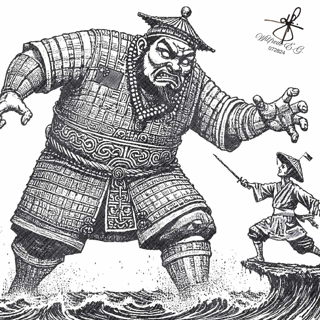
𝗘𝗗𝗜𝗧𝗢𝗥𝗜𝗔𝗟 |
The ongoing dispute between the Philippines and China over the waters of the West Philippine Sea (WPS) and the broader South China Sea (SCS) presents a complex story of historical claims, international law, and geopolitical maneuvers. At the center of this maritime struggle lies a clash between national sovereignty and expansive territorial claims rooted in history and economic ambitions.
The term West Philippine Sea, officially adopted by the Philippine government in 2011, symbolizes country’s assertion of its territorial rights within its exclusive economic zone (EEZ), extending 200 nautical miles from its shores. This nomenclature not only stakes a claim on a significant portion of the South China Sea but also underscores the Philippines’ rejection of China’s sweeping sovereignty assertions over the entire sea.
Covering a vast 3.5 million square kilometers, the South China Sea is a crucial maritime crossroads bordered by China, Taiwan, the Philippines, Indonesia, Brunei, Malaysia, and Vietnam. The overlapping claims of these nations, however, pale in comparison to China’s audacious claim over the entire sea, separated by the controversial nine-dash line. This boundary, originally the eleven-dash line published in 1947, forms the crux of China’s assertion of historical rights, despite widespread international criticism.
The Philippines, for its part, grounds its claim to the WPS on historical documents, the United Nations Convention on the Law of the Sea (UNCLOS), and the landmark 2016 Arbitral Tribunal ruling. One significant historical reference is the Velarde map, created in 1734, which highlights the West Philippine Sea and the Scarborough Shoal. Moreover, the UNCLOS, ratified by both China and the Philippines, supports Manila’s claim by outlining an EEZ that extends 200 nautical miles from a nation’s coast, granting rights to explore, exploit, and manage resources within this zone.
The 2016 ruling by the Permanent Court of Arbitration further bolstered the Philippines’ position, invalidating China’s claims of historical rights within the nine-dash line. The Tribunal found no legal basis for China’s assertion of exclusive control over the waters and resources, highlighting that the features claimed by China in the Spratly Islands could not generate an EEZ. This ruling underscored the Philippines’ rights within its EEZ and nullified China’s expansive territorial claims.
Despite this clear legal victory for the Philippines, China has steadfastly refused to acknowledge the ruling, continuing its activities in the disputed waters. This defiance has led to increased tensions and a militarized standoff in one of the world's busiest and most strategically vital waterways.
The Spratly Islands, a flashpoint in this conflict, consist of over a dozen islands, islets, cays, and reefs. While the Philippines claims only the northeastern section, known as the Kalayaan Island Group (KIG), China lays claim to the entire archipelago. The Tribunal’s ruling that these islands fall within the Philippines’ EEZ has done little to deter Beijing’s assertive stance.
As the standoff continues, it is imperative for the international community to recognize the legal framework established by UNCLOS and support the enforcement of the 2016 ruling. The rule of law must prevail over unilateral historical assertions to ensure peace and stability in the region.
Hence, the naming and claiming of this contentious body of water are more than mere semantics; they embody national pride, resource control, and geopolitical strategy. The choice between referring to these waters as the West Philippine Sea or the South China Sea is not just about maps—it is about asserting rightful sovereignty and upholding international law. At the end of the day, the choice lies in which shore we seek to anchor our collective narrative - Is it the West Philippine Sea or the South China Sea?
Wilfredo Emilio Guillermoさんをフォローして最新の投稿をチェックしよう!
0 件のコメント
この投稿にコメントしよう!
この投稿にはまだコメントがありません。
ぜひあなたの声を聞かせてください。
